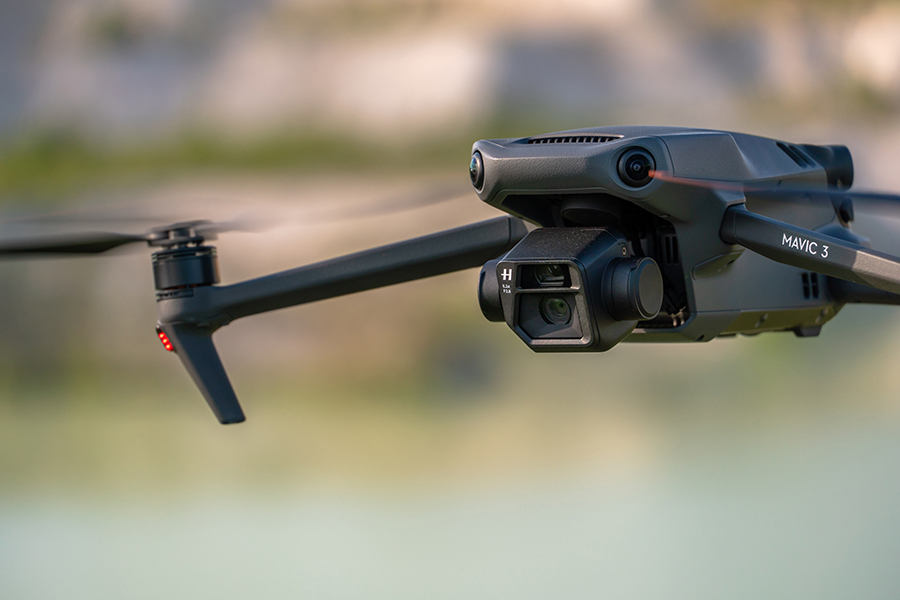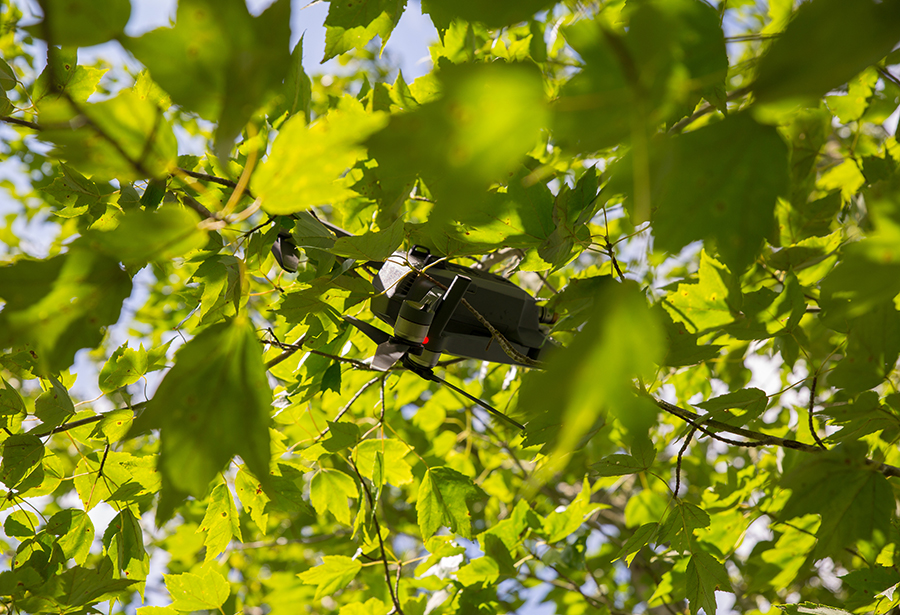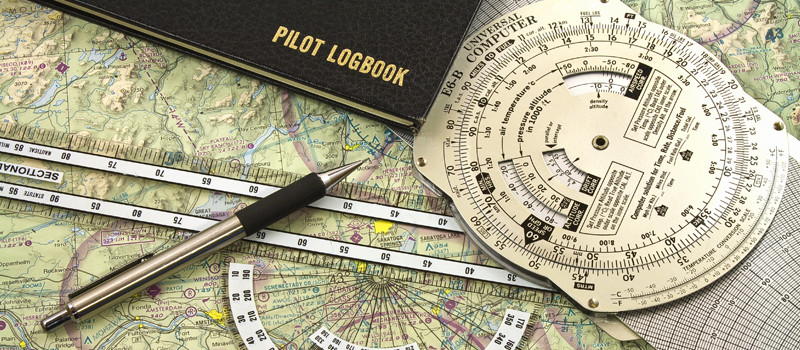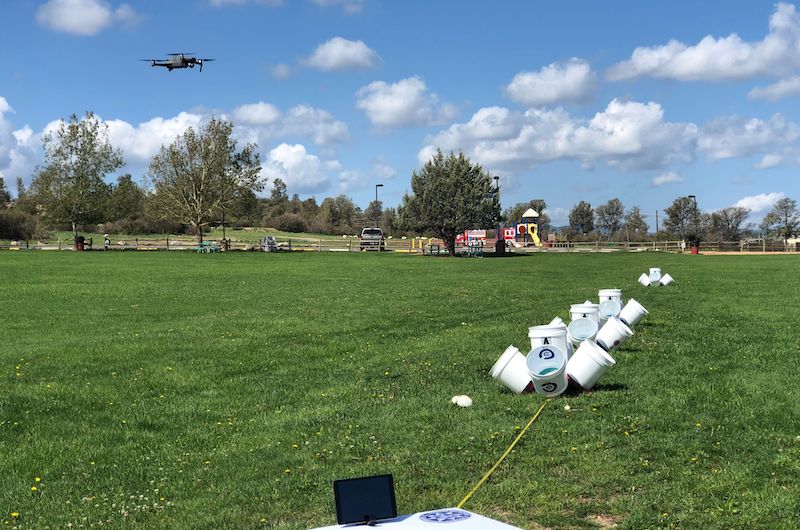With the launch of the Mavic 3 Pro, DJI has officially released a total of eight (8) versions of the Mavic 3 drone. This definitely seems like it’s too many, although some would argue that each version of the Mavic 3 serves a unique objective.
If you’re in a peculiar situation where you have to pick just one of these Mavic 3 drones, then this article is exactly the one you’re looking for. We will attempt to make sense of this huge selection of drones and define what makes each one of them tick.
The Lineup
To set the stage, let’s look at all the different Mavic 3 drones that you can buy today:
- DJI Mavic 3
- DJI Mavic 3 Classic
- DJI Mavic 3 Pro
- DJI Mavic 3 Cine
- DJI Mavic 3 Pro Cine
- DJI Mavic 3 Enterprise
- DJI Mavic 3 Thermal
- DJI Mavic 3 Multispectral
In some cases, it’s already fairly obvious what a specific Mavic 3 version is designed for. The Thermal drone is, of course, for thermal imaging. The Cine drone has features for high-quality filmmaking. The Spectral has multiple cameras for multispectral imaging.
However, there are other things to consider aside from the chief design objective of every drone. For this article, we shall focus the spotlight on each drone one at a time to help you decide which one you should get.
Take note that the main differences between the different Mavic 3 drones typically can be seen in their cameras. Other features such as obstacle avoidance, maximum transmission distance, and maximum flight time are practically the same. There may also be some differences that are still related to some sort of camera function, such as having a built-in SSD or a mechanical shutter.
The price range of the Mavic 3 drones is quite expansive, but they are by no means very budget-friendly – expect to spend at least $2000 for the most basic Mavic 3 drone.
DJI Mavic 3
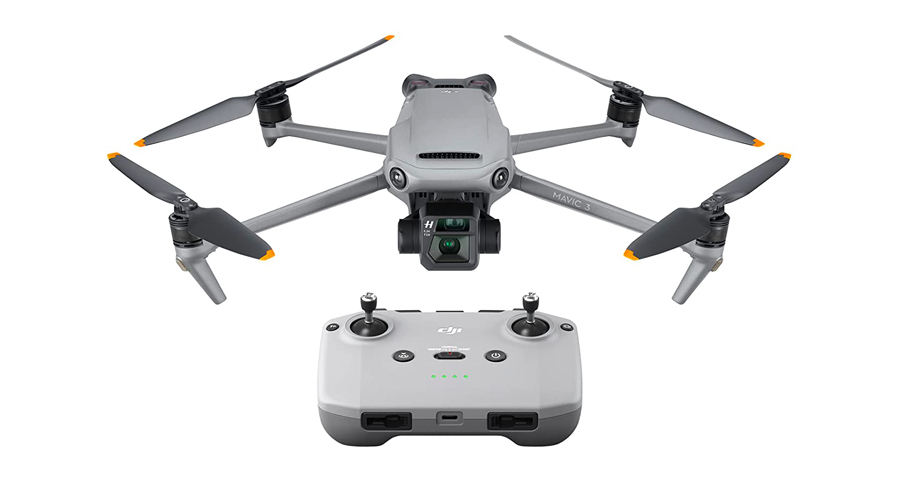
| Specifications | |
| Camera(s) | (1) 4/3” CMOS Hasselblad camera (2) ½” CMOS Tele Camera |
| Zoom | 7x (optical) to 28x (digital) zoom |
| Format | MP4/MOV |
| Mechanical shutter? | No |
| Other notable features | None |
| Price | $2199 (with DJI RC-N1 controller) $2849 (Fly More Combo with DJI RC-N1 controller) |
The base model of the DJI Mavic 3 is a good baseline for the series. It is far from being the most sophisticated but also is not the most basic.
The original Mavic 3 was launched alongside the more expensive and professional-grade Mavic 3 Cine. The camera selection of the Mavic 3 is still respectable, especially since it comes with an excellent 4/3” image sensor. The telecamera is a nice bonus, offering more options for framing your shots or focusing on farther away objects.
The biggest hiccup, if you’re after a Mavic 3, is the fact that it has already been discontinued by DJI. The price listed above is the price of the drone at launch. If you can find one still being sold nowadays, it should be substantially cheaper.
DJI Mavic 3 Classic
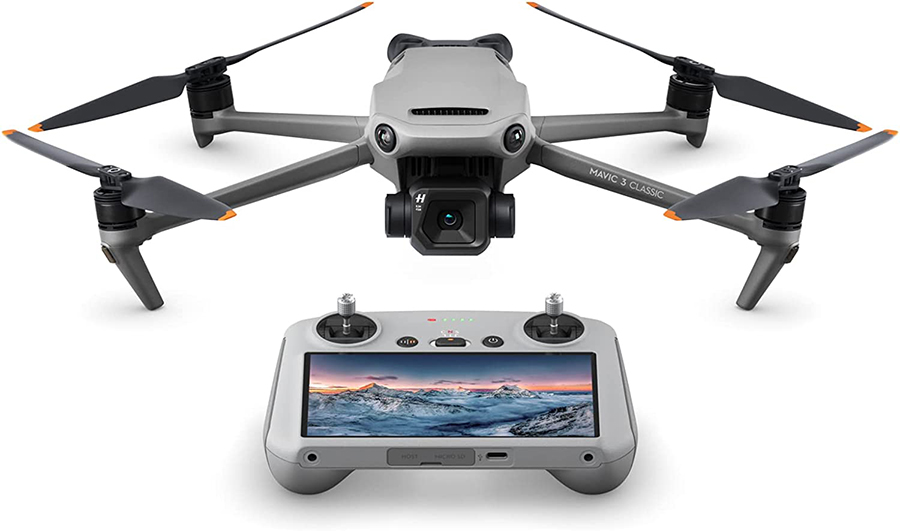
| Specifications | |
| Camera(s) | 4/3” CMOS Hasselblad camera |
| Zoom | None |
| Format | MP4/MOV |
| Mechanical shutter? | No |
| Other notable features | None |
| Price | $1469 (Drone only) $1599 (with DJI R-N1 controller) $1749 (with DJI RC controller) |
The DJI Mavic 3 Classic is the least expensive way to get a Mavic 3 drone, particularly if you’re buying brand new. This drone costs less than $2000, even if you buy it either with the DJI R-N1 controller or the newer DJI RC controller.
A major setback of the Mavic 3 Classic is that it only comes with a single camera. It is the only one-camera drone in the whole Mavic 3 lineup. If it’s any consolation, the camera still comes with the excellent 4/3” image sensor. This is still a top-of-the-line camera that is found in just about all other Mavic 3 drones.
You may be missing out on the telecameras or pro-grade compression format of the more expensive Mavic 3 drones, but ask yourself this – do you really need all of those? If not, then it’s perfectly fine to save a few hundred dollars and get a Mavic 3 Classic.
DJI Mavic 3 Pro
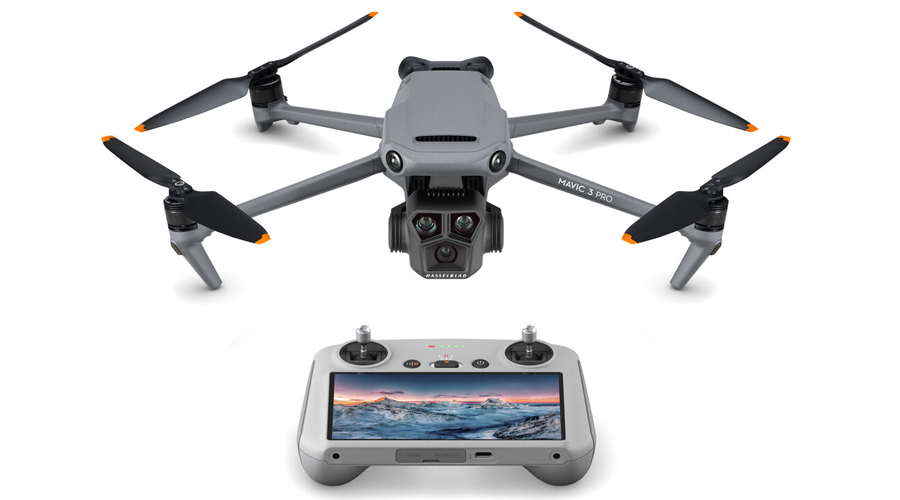
| Specifications | |
| Camera(s) | (1) 4/3” CMOS Hasselblad camera (2) ½” CMOS Tele Camera (3) 1/1.3” CMOS Medium Tele Camera |
| Zoom | (1) 7x (optical) to 28x (digital) zoom (2) 3x (optical) to 7x (digital) zoom |
| Format | MP4/MOV |
| Mechanical shutter? | No |
| Other notable features | Wider aperture on telecameras |
| Price | $2199 (with DJI RC) $2999 (Fly More Combo with DJI RC) $3889 (Fly More Combo with DJI RC Pro) |
The DJI Mavic 3 Pro is a souped-up version of the original Mavic 3. It has three cameras instead of two, adding a medium tele camera to the mix. The Mavic 3 Pro also has a wider fixed aperture on the telecameras compared to the Mavic 3, allowing it to perform better under low light.
The three cameras of the Mavic 3 Pro instantly make it one of the most versatile drones for aerial photography. The variety of zoom and framing options is pretty fun to play with, and will certainly change the way you look at capturing shots with your drone.
The Mavic 3 Pro was launched at $2199 with the DJI RC controller – the same launch price as the original Mavic 3. With its much better hardware, the Mavic 3 Pro certainly offers excellent value for money. It is still quite expensive, though, so it may still not be everyone’s cup of tea.
DJI Mavic 3 Cine
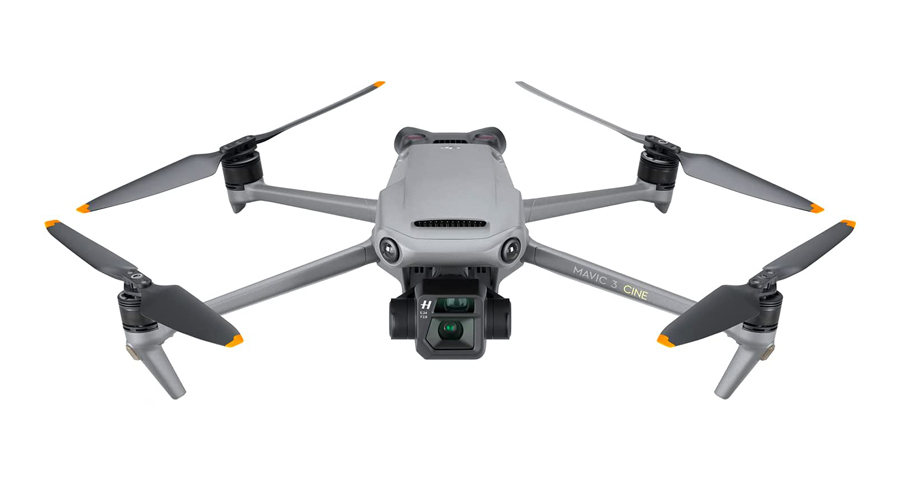
| Specifications | |
| Camera(s) | (1) 4/3” CMOS Hasselblad camera (2) ½” CMOS Tele Camera |
| Zoom | 7x (optical) to 28x (digital) zoom |
| Format | MP4/MOV Apple ProRes 422 HQ |
| Mechanical shutter? | No |
| Other notable features | Built-in 1 TB SSD |
| Price | $4999 |
The Mavic 3 Cine was launched alongside the original Mavic 3 as a more premium version and was geared toward professional photographers and filmmakers. It had the same cameras but had two advantages going for it – a built-in 1 TB SSD, and the ability to record in Apple ProRes 422 HQ format.
The combination of these two features allows for the recording of video at a high bit rate. The Apple ProRes format makes it possible to post-process on video editing software like Final Cut Pro or Adobe Premiere Pro. This is a common workflow for professionals as it results in lossless videos even after several encoding and decoding cycles.
There is a pretty huge drawback– the Mavic 3 Cine starts at $4999. This is a huge jump in price compared to the first three drones we have highlighted. However, the Mavic 3 Cine also caters to a very specific market. If you’re not doing aerial photography professionally, then the ProRes feature might be overkill for you.
DJI Mavic 3 Pro Cine
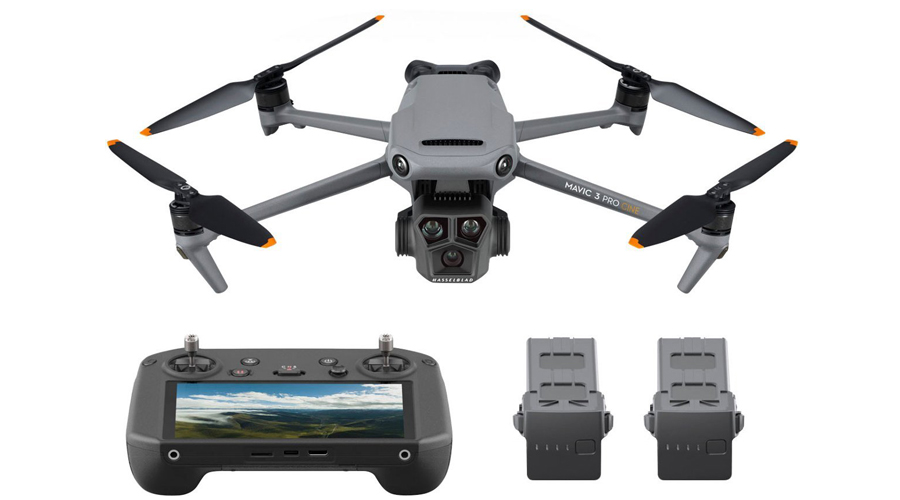
| Specifications | |
| Camera(s) | (1) 4/3” CMOS Hasselblad camera (2) ½” CMOS Tele Camera (3) 1/1.3” CMOS Medium Tele Camera |
| Zoom | (1) 7x (optical) to 28x (digital) zoom (2) 3x (optical) to 7x (digital) zoom |
| Format | MP4/MOV Apple ProRes 422 / 422 HQ / 422 LT |
| Mechanical shutter? | No |
| Other notable features | Built-in 1 TB SSD Comes with 10Gbps Lightspeed data cable |
| Price | $4799 (DJI Mavic 3 Pro Cine Premium Combo) |
The DJI Mavic 3 Pro Cine is basically the “Pro” version of the DJI Mavic 3 Pro. Again, this co-launched drone features the three cameras of the Mavic 3 Pro, instantly making it one of the best and most versatile camera drones available today.
The Mavic 3 Pro Cine combines the impressive camera array with the standout features of the Mavic 3 Cine – the built-in 1 TB SSD, a 10Gbps Lightspeed data cable, and the ability to capture using the Apple ProRes 422 recording codec.
There is more to this combination than meets the eye. The Mavic 3 Pro Cine supports three versions of Apple ProRes – the standard ProRes 422, ProRes 422 HQ, and ProRes 422 LT. Better yet, ProRes format recording is supported on all three cameras.
Unsurprisingly, the DJI Mavic 3 Pro Cine is quite expensive at almost $5000 for the Premium Combo that comes with the DJI RC Pro controller. At this price range, this drone may already not be attractive to most casual users. This is for good reason, too – the high-level features of the Mavic 3 Pro Cine really are meant for professional users.
DJI Mavic 3 Enterprise
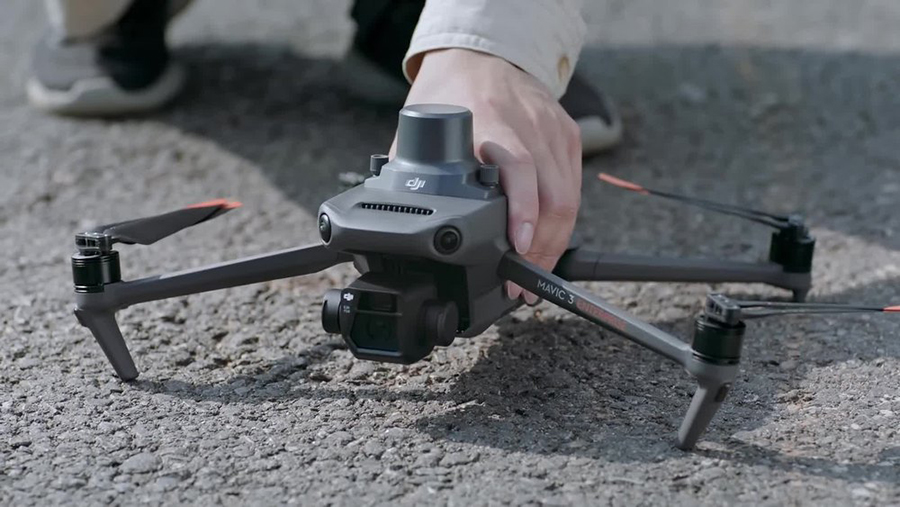
| Specifications | |
| Camera(s) | (1) 4/3” CMOS Wide-Angle Camera (2) ½” CMOS Tele Camera |
| Zoom | 7x (optical) to 28x (digital) zoom |
| Format | MP4 |
| Mechanical shutter? | Yes |
| Other notable features | Compatible with optional RTK module and loudspeaker accessory |
| Price | $3800 |
The DJI Mavic 3 Enterprise, as the name implies, is an enterprise-grade drone that is designed to be an accurate surveying and mapping tool. It retains the two cameras of the DJI Mavic 3, also making it useful for general aerial photography.
The M3E comes with a mechanical shutter, further driving home the point that it was specifically designed for mapping. This makes it a much more appropriate tool for aerial mapping, creating sharper images without the artifacts commonly observed when using a rolling shutter.
The potential of the M3E can be maximized by enhancing it with the optional RTK module. This makes the drone’s location data much more accurate, which can be critical for high-level mapping jobs. The M3E also offers a loudspeaker accessory that can be useful for search-and-rescue or other public safety operations.
The M3E obviously appeals to a niche market. It was launched with a price tag of around $3800 for a combo that comes with the RC Pro Enterprise remote controller. Accessories like the RTK module and loudspeaker cost extra.
DJI Mavic 3 Thermal
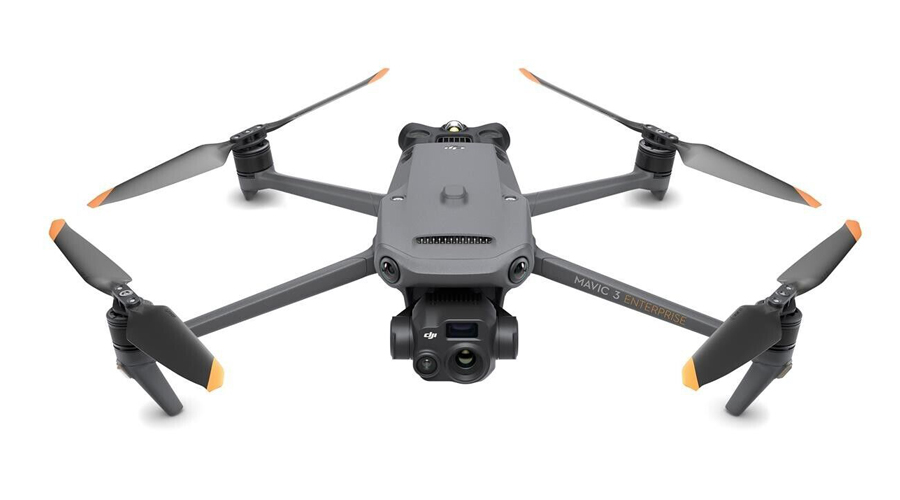
| Specifications | |
| Camera(s) | (1) 1/2” CMOS Wide-Angle Camera (2) ½” CMOS Tele Camera (3) 640 x 512 Thermal Camera |
| Zoom | (1) 56x hybrid zoom (2) 28x digital zoom |
| Format | MP4 |
| Mechanical shutter? | No |
| Other notable features | Compatible with optional RTK module and loudspeaker accessory |
| Price | $4999 (DJI Mavic 3T Standard Version) |
The Mavic 3 Thermal was launched simultaneously with the M3E. They are essentially the same drone, except that the Mavic 3 Thermal comes with thermal imaging capabilities. This is by way of a 640 x 512 thermal camera that sits on the same housing as the two standard cameras of the Mavic 3 line.
The M3T thermal camera support spot and surface temperature measurements, temperature alerts, and customizable color palettes and isotherms. The thermal image can be viewed simultaneously with the zoom camera, providing a more comprehensive perspective of the area being surveyed.
The M3T is another drone that serves a niche use case, but it performs excellently in this field. It is a valuable tool for professional uses such as building inspection, search and rescue, firefighting operations, and general public safety use.
The M3T can also be used for mapping and is even compatible with the RTK module. However, it does NOT have a mechanical shutter. It is also the only Mavic 3 drone that does not come with a 4/3” image sensor.
Unsurprisingly, the Mavic 3T is very expensive – it starts at $4999 for the standard version. This is pretty much at par with many other industry-grade drones with thermal cameras. It is certainly an amazing thermal imaging drone for the niche market that it appeals to.
DJI Mavic 3 MultiSpectral
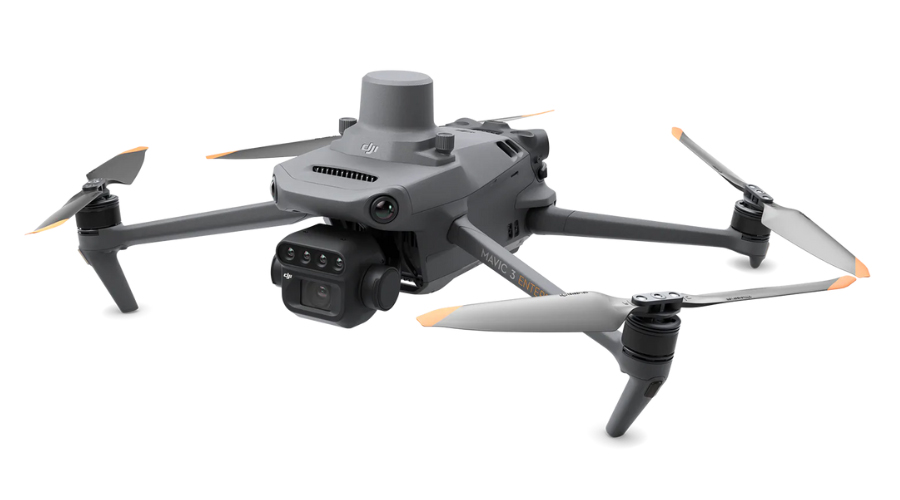
| Specifications | |
| Camera(s) | (1) 4/3” CMOS RGB Camera (2) 1/2.8” CMOS Multispectral camera (G/R/RE/NIR) |
| Zoom | None |
| Format | MP4 |
| Mechanical shutter? | Yes, on the RGB camera |
| Other notable features | Compatible with RTK module |
| Price | ~$4600 |
The Mavic 3 Multispectral was one of the later additions to the Mavic 3 family. As the name implies, it is designed for multispectral imaging, making it a valuable drone for precision agriculture and farm health management.
The key feature of the M3M is the four-lens multispectral camera that captures images in the Green, Red, Red Edge, and Near-IR wavelengths. These lenses collect information related to crop health that the human eye simply cannot perceive. The M3M also comes with an RTK module, allowing for centimeter-level location accuracy in agricultural mapping.
The M3M is only available in select regions and countries, so nailing down a single price point can be a bit difficult. Packages start at about $4600, making the M3M quite an expensive drone. Again, this is a drone that is designed for a niche market.
Which one should you get?
It should be pretty obvious by now that each of the Mavic 3 drones seems to be designed for a different subset of drone pilots. Do you want to get one for casual photography? Then the original Mavic 3 or even the Mavic 3 Classic will work perfectly. Are you looking into doing more professional-level photography or aerial filmmaking? You might want to look into the Mavic 3 Pro or the Cine versions of the drones.
As with any list of this type, we will defer to the tried-and-true statement – that each option has its pros and cons. Hopefully, breaking down the list and discussing their merits individually gives you some guidance on which Mavic 3 is best for you.
